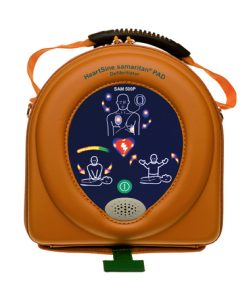
Given the cost of buying an AED it is appropriate, where possible to share their availability. The questions an employer should ask in this scenario is:
1. Does it meet the accessibility requirements described below?
2. Have I formally confirmed with the AED owner that:
a. They agree to share the device?
b. The device is under warranty and properly maintained?
c. The device is accessible during my operating hours?
Quality of Devices
While we would never encourage someone to dispose of an AED that is in good working order and under manufacturer’s warranty, the following should be considered when purchasing new devices. As with all products, some devices are better at saving lives and easier to own, maintain, and use than others. Devices should:
a) Meet Australian Resuscitation Council Standards and escalate in energy to at least 200 joules or 360 joules if available (some devices still being marketed only shock to 150 joules).
b) Be warranted by a reputable manufacturer with local representation.
c) In instances where children under eight fall under duty of care, that the device has an integrated paediatric mode which can be enabled without requiring a change of pads. The need to change pads adds the cost of extra pads and, more importantly, makes it more difficult for the first responder assisting.
d) Be equipped with batteries and pads which require minimal change-outs. The most common cause of AED malfunction is failure to replace batteries or maintain pads. For this reason, we recommend providers who offer monitoring or provide proactive servicing or alerts. Additionally, units which only require maintenance every four years are recommended.
All our devices meet these standards.
